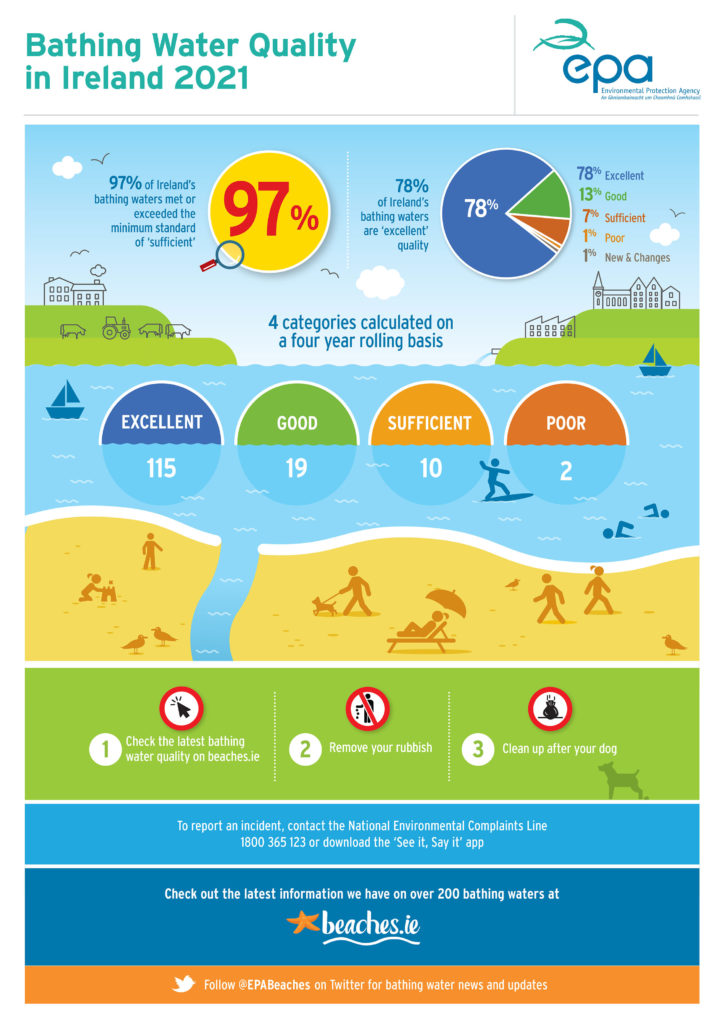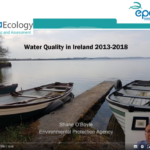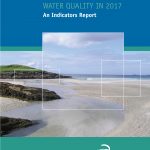The EPA report Water Quality In Ireland 2013-2018 was originally…
EPA publishes report on Bathing Water Quality in Ireland in 2021
On 13 May 2022 the EPA published the Bathing Water in Ireland report for 2021 which shows that 78% of bathing sites have excellent water quality while 97% meet the minimum standard. This is attributed to improved management of bathing waters over many years combined with investments in treatment of urban waste water.
However, while bathing water quality has continued to improve overall, there are still issues to address to protect and further improve bathing waters.
Agriculture, urban waste water and fouling from dogs on beaches still impact the quality of bathing waters. In addition, heavy rainfall can also quickly impact by washing pollution into our bathing waters.
Swimmers should always check www.beaches.ie for the latest bathing water quality information.
Summary
- 97 per cent of bathing waters (144 of 148) met or exceeded the minimum required standard. This is up from 96 per cent in 2020
- 115 (78 per cent) bathing waters were classified as ‘Excellent’, up from 111 in 2020
- Westmeath County Council and other stakeholders have collaborated to improve bathing water quality at Lilliput Lough Ennell, Co. Westmeath which was classified as ‘Poor’ for 2018, 2019 and 2020. During 2020 and 2021, the bathing water quality improved significantly due to actions taken by farmers in the surrounding catchment. The restriction on swimming has been removed.
- Two bathing waters were identified in 2020 and were classified for the first time following the 2021 season. They were Carrigaholt and Quilty, both in Co. Clare and both ‘Excellent’.
- One new bathing water, Aillebrack/Silverhill Beach, Co. Galway was identified in 2021.
- 42 pollution incidents were reported to EPA during 2021. Incidents have the potential to cause a pollution risk and when they occur, swimming restrictions are applied at the beach until sampling shows the water quality is safe.
- Local authorities also put up 104 ‘Prior Warning’ notices at beaches in 2021, to warn swimmers that short-term pollution (lasting no more than a few days) may occur due to heavy rainfall. These warnings are removed when sampling shows the water quality is safe.
2 bathing waters were classified as ‘Poor’, down from 4 in 2020. Local Authority management plans have been put in place to address the sources of pollution at these two beaches:
- Balbriggan – Front Strand Beach, Co. Dublin which is impacted by sewage discharges and misconnections; faeces from dogs, birds and other animals; and contaminated surface streams flowing through the town.
- Lady’s Bay, Buncrana, Co. Donegal which is impacted by Buncrana waste water treatment plant, combined stormwater overflows, and surface run-off, which are made worse by heavy rain.
Learn more:








